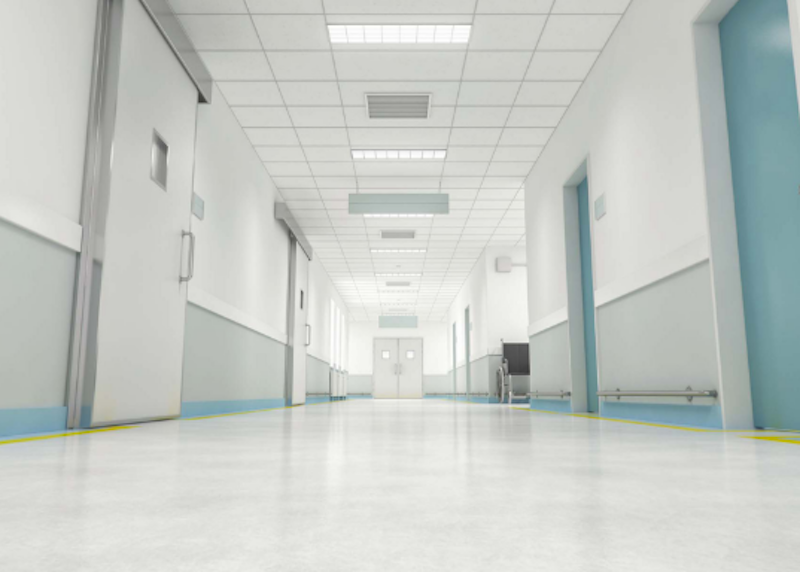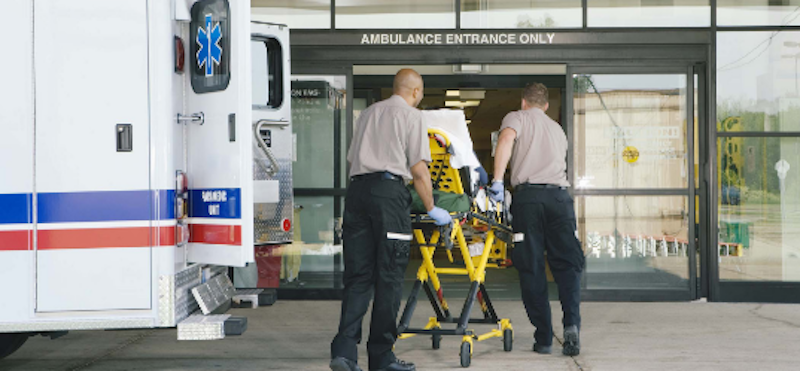Atlanta Falcons fans had much to cheer about in 2016. From Halloween through the stunning conclusion to Super Bowl LI, a strong case can be made that no team in the NFL played better than the Falcons. The real strength of their team was a high-powered offense that seemed at times as though they could score at will. For their many accomplishments, one statistic stands out and that is their performance in the Red Zone.
On a one hundred yard football field, teams are said to enter the Red Zone when they get to (or beyond) the opposing team’s 20-yard line. Good offensive teams can go up and down the field but entering the Red Zone can sometimes seem like entering another zone made famous by Rod Serling where the defense stiffens and strange things happen. Ultimately, offensive teams are judged by their ability to score and teams that routinely convert Red Zone opportunities into touchdowns are tough to beat. In 2016, the Atlanta Falcons converted nearly 3 out of every 4 Red Zone opportunities into touchdowns and were the best in the league at finishing strong and getting into the end zone.
Facility Activation is a lot like operating in the Red Zone. Project teams work for years marching down the field to ultimately arrive at the last few months where myriad final preparations must all come together to operationalize and occupy the new facility. Operating poorly in the project “Red Zone” can cause headaches for your staff, patients and visitors. Proper planning can assist in avoiding pitfalls and, not surprisingly, there is a cost associated with the execution of this phase.
Understanding the costs specifically related to activation is one of the keys to successfully occupying the new space you’ve worked so hard to create. Last month’s CBRE Healthcare Perspective shared the basics of developing a Total Project Budget. It was brought to our attention that we had shortchanged one of the most important components of the master budget – the cost of activating a new facility. So, without further ado and with great apologies to mourning Falcons fans let’s walk through some Facility Activation Budget considerations.

Facility Readiness
Facility Readiness Activities encompass a broad range of tasks that basically cover everything a contractor does not do. Imagine what it would look like if you walked into your new facility once the contractor had completed their scope of work but before anything else had been done. Your image is most likely a bare unfurnished room without artwork or equipment. Supply rooms lack supplies and your laptop is ineffective due to the absence of a wireless network. You look for directional signage to lead you through the facility but none has been installed. Reaching for a phone is pointless as they don’t exist and even if they did, there would be no service. Your badge doesn’t open any secured doors because although the security system is active, the new access points are not programmed into your campus security system. In short – you are so close to the goal line you can see, taste and feel it, but there is still more work that needs to be done to cross that line.
With few if any exceptions, these items must be accounted for in your project plan and budget as they are not optional and are commonly capitalized as part of the overall project cost. Typically, these costs are included indistinct budgets for furniture, signage or medical equipment. Technology budgets often include costs for outside assistance installing a new network(or connecting to an existing one) and imaging and deploying new phones and computers. Exactly where you budget for facility readiness costs is less important than ensuring that you actually account for them. Ask yourself the following key questions:
- What is the contractor not providing and who will provide each of those items?
- Who will install them and ensure that they are operational?
- Are these costs part of the project budget or part of the future operational budget?
Operational Readiness Activities
While Facility Readiness ensures your building is ready for staff and patients, Operational Readiness ensures your staff is ready to work in the building. Tasks include training and orienting staff to the new work flows and may involve dedicated “day in the life” simulation sessions. It is much better to identify “what happened to the crash cart” in a training session as opposed to a real-life emergency. In addition, new equipment may require additional knowledge or skills that don’t currently exist. Brochures or kiosks should be used to assist visitors with new wayfinding. Regulatory approvals and licenses must be obtained or updated. Policies and procedures need to be updated to reflect the new physical space as well as new operational processes that are being implemented in the space.
The vast majority of this work is performed by your staff and their direct leaders. It may come as no surprise that these men and women already have a day job. Consider how you will account for lost productive time while staff are working on not only caring for patients but also preparing to work in a new place. Overtime costs are likely to spike as you approach move day. Many of these costs are often funded out of the organization’s operational budget and are not capitalized as part of the project cost. As you reflect on these issues, ask yourself a few key questions:
- What does the staff need to provide safe and effective care in the new environment?
- How will we ensure that current operations are not negatively impacted during this transition?
- What are the costs associated and how will they be accounted for?

Patient Relocation
Ultimately, we build new healthcare facilities for patients and their families. This is what it’s all about. Moving patients, families and their belongings from one facility to the next is a planning and preparation exercise unto itself. The reality is that healthcare organizations transport patients every day, all day. The main differences when moving to a new facility are the volume of moves, the newness of the situation and the fact that, for a period of time, you need to operate two facilities at once. Great care and detailed planning is mandatory to turn the patient move process into a seamless, safe and low stress event.
Added costs come in a variety of forms. Extra staff are likely needed to facilitate transport along with care in both the new and old facilities. Depending on the distance between facilities and the types of patients being moved, transport vehicles may need to be contracted. Local police often assist in enhancing security or providing for traffic control at busy intersections along the vehicular move route. Local movers may be required to relocate belongings or medical equipment that transfers with a patient. Contractors should be onsite to respond to any emergent issues with the new facility as it comes online. Staff tend to work long hours as move day approaches and, as it turns out, sometimes people like to eat. You may elect to have free food for staff and families as a gesture to all the effort and change people are experiencing. As you plan for your patient move ask yourself the following key questions:
- What is needed to ensure patient care is maintained at the highest level throughout the relocation process?
- What outside resources are needed toaugment our team on this critical day?
- What are the costs associated with theseissues and how will they be accounted for?
Finally
And if all that was not enough, there are a few other things to consider – grand openings, media events, donor events, etc. It’s your time to shine and you spent a ton of money to get there so enjoy it while you can. However, each of these end of project activities also carry costs. The number of events and the cost of those events depends largely on your goals so give some consideration to how and where you want to budget for these items. Hiring of incremental new staff is a major expense that requires careful planning to ensure positions are filled in a timely and effective manner.
In the end, Facility Activation is taking a new space or building and transitioning the ownership from your design and construction team to your staff and patients. Successful execution is a project in and of itself. You should have a project team, a schedule and a budget dedicated to each of these tasks. Leave yourself plenty of time to think through issues and become comfortable with your plan. Do that, and like the Atlanta Falcons, you will score virtually every time.
Related Stories
| Jun 18, 2014
Arup uses 3D printing to fabricate one-of-a-kind structural steel components
The firm's research shows that 3D printing has the potential to reduce costs, cut waste, and slash the carbon footprint of the construction sector.
| Jun 16, 2014
6 U.S. cities at the forefront of innovation districts
A new Brookings Institution study records the emergence of “competitive places that are also cool spaces.”
| Jun 12, 2014
Austrian university develops 'inflatable' concrete dome method
Constructing a concrete dome is a costly process, but this may change soon. A team from the Vienna University of Technology has developed a method that allows concrete domes to form with the use of air and steel cables instead of expensive, timber supporting structures.
| Jun 11, 2014
5 ways Herman Miller's new office concept rethinks the traditional workplace
Today's technologies allow us to work anywhere. So why come to an office at all? Herman Miller has an answer.
| Jun 9, 2014
Green Building Initiative launches Green Globes for Sustainable Interiors program
The new program focuses exclusively on the sustainable design and construction of interior spaces in nonresidential buildings and can be pursued by both building owners and individual lessees of commercial spaces.
Smart Buildings | Jun 8, 2014
Big Data: How one city took control of its facility assets with data
Over the past few years, Buffalo has developed a cutting-edge facility management program to ensure it's utilizing its facilities and operations as efficiently, effectively, and sustainably as possible.
| Jun 4, 2014
Emerging trends in healthcare development: neighborhood care, mixed-use models on the rise
In urban and even suburban markets, real estate is about the "live, work, play," with close proximity to mass transit and other amenities, like retail stores. Healthcare organizations are following suit.
| Jun 2, 2014
Parking structures group launches LEED-type program for parking garages
The Green Parking Council, an affiliate of the International Parking Institute, has launched the Green Garage Certification program, the parking industry equivalent of LEED certification.
| May 29, 2014
7 cost-effective ways to make U.S. infrastructure more resilient
Moving critical elements to higher ground and designing for longer lifespans are just some of the ways cities and governments can make infrastructure more resilient to natural disasters and climate change, writes Richard Cavallaro, President of Skanska USA Civil.
| May 23, 2014
Top interior design trends: Gensler, HOK, FXFOWLE, Mancini Duffy weigh in
Tech-friendly furniture, “live walls,” sit-stand desks, and circadian lighting are among the emerging trends identified by leading interior designers.















